30 Lincoln Plaza, 30 West 63rd Street: Review and Ratings
between Central Park West & Broadway View Full Building Profile
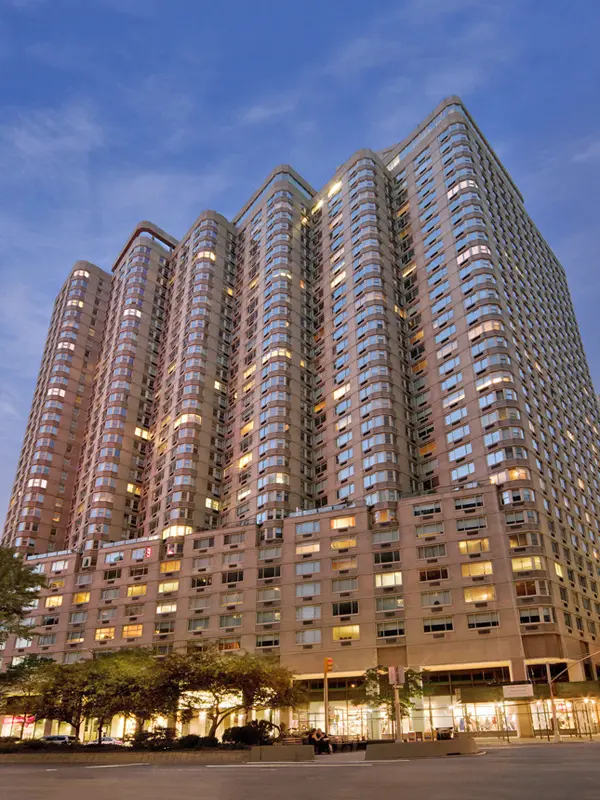

The Lincoln Center for The Performing Arts was planned not only to create a major new cultural center for the city but also as an important urban renewal project for the Upper West Side.
Two of the most important major private projects to be developed in the Lincoln Center for the Performing Arts area after the center opened were built by the Milstein Organization, 30 Lincoln Plaza at 30 West 63rd Street and the 40-story tower at One Lincoln Plaza at 20 West 64th Street.
Both were major apartment buildings facing the center along the east side of Broadway. Both were designed by Philip Birnbaum.
30 Lincoln Plaza was the second of the two and was built in 1980.
The 33-story, cream-colored brick building has 609 apartments that were originally rented but converted to condominiums in 2011.
Bottom Line
Massive and rather ungainly, this very well-located apartment tower nonetheless has a fine arcade, a very nice mid-block plaza and an excellent underground cineplex. It is also very close to the Lincoln Center for the Performing Arts and Columbus Circle and the Whole Foods store at the Time Warner Center.
Description
This beige-brick building is far more complex as its Broadway façade is divided, above the arcaded, 7-story base, into six rounded piers that provide many bay windows, probably more than on any other residential building in the city except for the Corinthian at First Avenue and 38th Street.
While the proportions and quality of finish are not highly refined, the overall form is interesting and a good contributor to the architectural eccentricity of the area, especially since it is not far from the Century apartment building on Central Park West that has some rounded forms at the rear of its twin towers.
If it were clad in reflective glass and had bay windows also on its south side and a slightly taller profile, it would be one of the city's more impressive buildings.
The building has discrete air-conditioners and consistent fenestration. The building is also known as 1884 Broadway, 21 West 62nd Street and 22 West 63rd Street.
Its arcade has lively retail activity that includes a small but excellent magazine store and a cineplex. The middle of the arcade has a broad entrance to the development's large and attractive mid-block plaza that is lushly landscaped and has a water element. Despite the fact that much of the plaza is often in the project's own shadow in the afternoon, it is one of the more popular in the city and a surprising and quiet oasis in this quite busy neighborhood.
Amenities
There is a doorman and concierge, a garage, a driveway, a health club, a roof deck with a swimming pool, a bicycle room, valet service and laundry facilities on every floor.
Central Park is a block away to the east and Columbus Circle and the Time Warner Center with its Whole Foods basement store are a couple of blocks to the south.
Restaurants including Atlantic Grill and Café Bouley are in the area. Shops such as Bed & Bath, Brooks Brothers, and Century 21 are also nearby.
Apartments
There are 21 apartments on most floors.
Apartment 28W has a small entry foyer next to a 7-foot-long kitchen and leads to a 20-foot-long living/dining room and a six-sided 11-foot-wide bedroom.
Apartment 19B is a one-bedroom unit that has a 9-foot-wide entry foyer that leads to a 20-foot-long living/dining room with a 10-foot-wide corner parlor and a 10-foot-long enclosed, windowed kitchen.
Apartment 6K is a two-bedroom unit that has a small entry foyer next to a 10-foot-wide enclosed kitchen and a 9-foot-long home office and leads to a 24-foot-long living room.
Apartment 15M is a three-bedroom unit with a foyer that leads past an angled kitchen to a 21-foot-long living/dining room. One of the bedrooms has a four-sided corner bay window.
History
Both the Milstein buildings across from the performing arts center are interesting and not without their urbanistic virtues, even if they are not masterpieces. They both have high arcades along Broadway and towers that maintain the angled "street-wall" of Broadway. They also both have fairly unusually massing by Manhattan standards.
The first building, One Lincoln Plaza, is a condominium and was erected in 1974. It has a relatively plain façade that is patterned with vertical accents with beige and dark brown bricks.
The center has spurred considerable residential construction in its vicinity, especially at the north end where numerous towers were erected with multi-level retail spaces.
This bustling area has many restaurants and stores and excellent public transportation.
In their book, "New York 1960, Architecture and Urbanism Between The Second World War and the Bicentennial," Robert A. M. Stern, Thomas Mellins and David Fishman provided the following commentary relating to this site:
"In November 1966, following the completion of the Metropolitan Opera House, the architect William F. R. Ballard, who served as chairman of the City Planning Commission, proposed the construction of a monumental mall connecting Lincoln Center's main plaza with Central Park to the east. The landscaped mall was intended to fully occupy the block bounded by Broadway, Central Park West, Sixty-third and Sixty-fourth streets; a 1,000-car garage would be located beneath it. The mall had the support of Wallace Harrison who, along with other members of his advisory committee, had ten years earlier advocated the organization of Lincoln Center around a central plaza, which they hoped would ultimately be approached by a grand allee leading from Central Park.”
“Ballard's plan...called on the city to acquire the property as parkland through eminent domain and would have necessitated the demolition of three architecturally significant buildings: the Ethical Culture Society School (Robert D. Kohn and Carrere & Hastings, 1902), on the northwest corner of Central Park West and Sixty-third Street; the adjacent Ethical Culture Society Hall (Robert D. Kohn, 1911), on the southwest corner of Central Park West and Sixty-fourth Street; and the West Side Branch of the YMCA (Dwight James Baum, 1930), at 5 West Sixty-third Street...."
An alternate plan was presented by Raymond Loewy/William Snaith Inc. that called for tall buildings on the block between Broadway and Central Park West that would be spaced widely to provide unobstructed view between Lincoln Center and Central Park. Pedestrian walkways on a second level were also included.
Eventually, in 1969, the city enacted a 15-block, special zoning district for the area and One Lincoln Plaza became the first building to be erected under its provisions was Seymour Milstein had acquired by then the New York Academy of Science site.
The authors noted that "Once the special district became law, Milstein, 'playing skillfully on the institutional jealousies between City agencies,' convinced the Board of Standards and Appeals to give him an additional 20 percent floor bonus over the bonus already allowed by the special district.”
In the fourth edition (2000) of the great book, “The A. I. A. Guide to New York City,” Elliot Willensky and Norval White described this building as “another behemoth from the Lincoln Center syndrome,” adding that “the overwhelming skewed prism has no redeeming social or architectural significance. The public arcade only allowed it to be bigger – what an urbanistic mistake!”
In time, One Lincoln Plaza’s prominent skyline isolation lessened significantly with new high-rise construction in the area.
Moreover, its arcade and extensive sidewalk cafés and mid-block plaza have proven to be very successful urbanistically.
Nearby, Lincoln Plaza Tower on the southwest corner of Columbus Avenue and West 62nd Street was designed in 1972 by Horace Ginsbern & Associates with almost as many curved balconies as there were bay windows at 30 Lincoln Plaza, so one could argue that the two buildings were in context with one another, even though they were on different avenues. The rounded forms of Lincoln Plaza Tower make it much more attractive than 30 Lincoln Plaza, but the latter also incorporated a large underground cineplex that contributed significantly to the cultural offerings in the area and its arcade continued that started at One Lincoln Plaza.

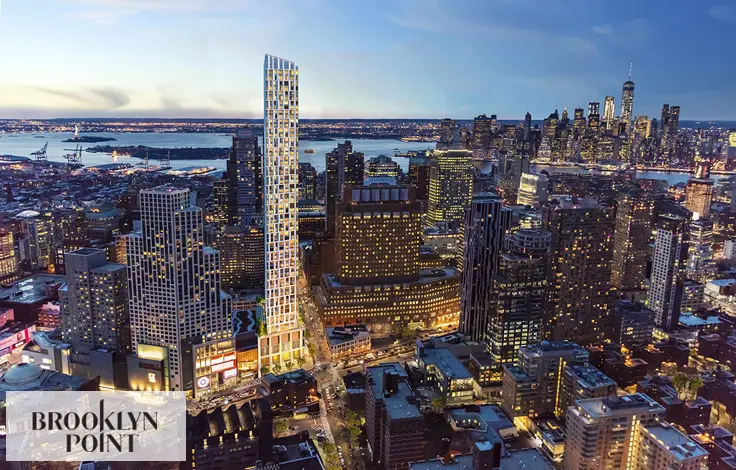

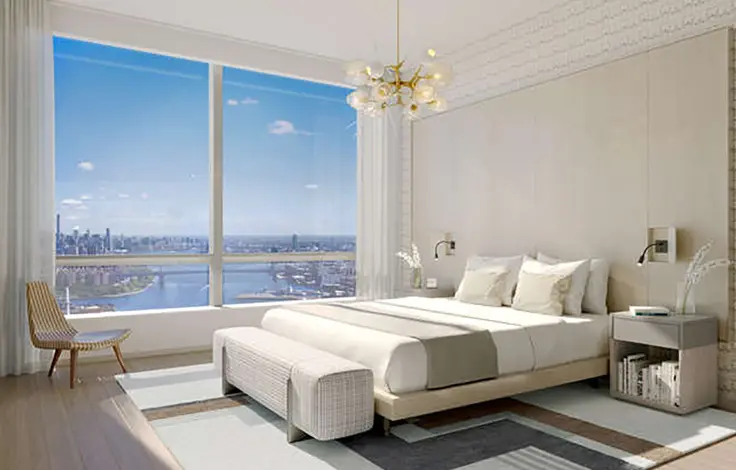
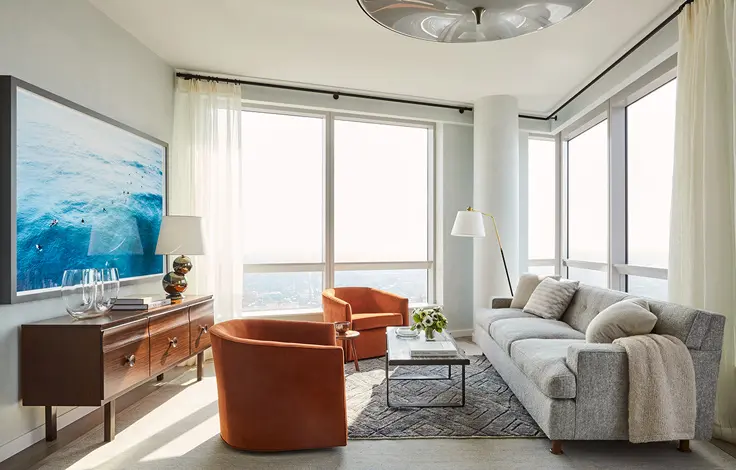
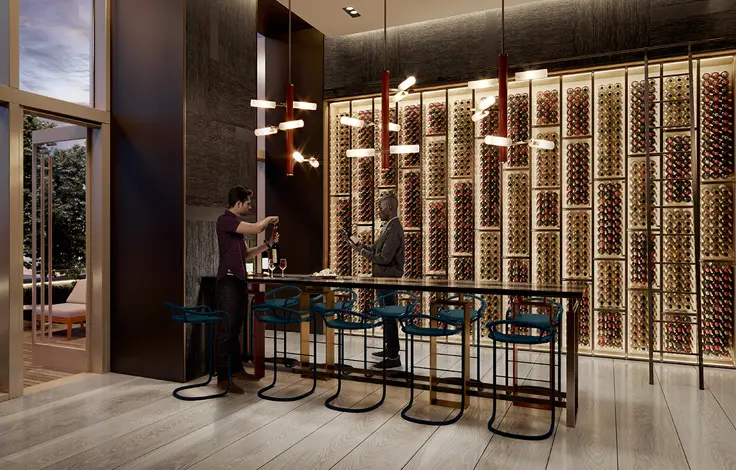
 6sqft delivers the latest on real estate, architecture, and design, straight from New York City.
6sqft delivers the latest on real estate, architecture, and design, straight from New York City.
